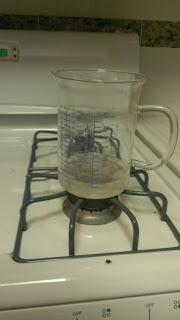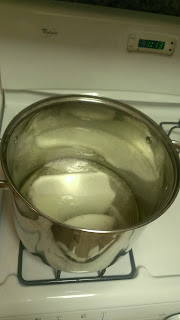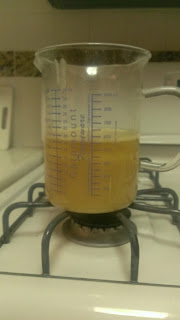Integrated biological treatment of fowl manure for nitrogen recovery and reuseShows some amazing results from a relatively simple system: a net uptake and conversion of 40g of ammonia per cubic meter of biofilter per hour. (The latency for conversion is not explicitly covered, but the description of the measurement process leads me to infer it's on the order of hours or perhaps a few days.)
in Journal of Environmental Management 117 (2013) 172e179
by Roy Posmanik, Ali Nejidat, Boaz Bar-Sinay and Amit Gross
(link to paywalled paper)
First, Kudos to the authors. Great project, nice work. Particular merit for the explicit publication of the values in Table 3. That is (often enough) the value people are seeking in systems like this, and too often it is glossed over, left as an implication, or omitted altogether. Well done.
The bad news:
The process itself is patent-encumbered, so perhaps not generally available.
I publish these questions in the hopes that they will spur other people's brains as well.
Questions about the text of the paper
- The text says "The NU was composed of six opaque PVC columns (120 cm long and 15 cm internal diameter) filled with a mixture of 10 L mature dairy manure compost [...] and 10 L plastic beads". Can I read that as "... EACH filled with a mixture..."? It would seem to make sense, since the dimentions specified would give a volume of just over 20L, so filling them with 20L of material individually would make sense.
- What is the significance of "Mature" in the phrase "mature dairy compost"? I am familiar with cow manure, but this sounds like something different.
- The initial pH and electrical conductivity are given, but not referred to again. Is there a significance for this data?
- The apparent inputs to the NU over the experiment are:
1L/column/day of water
15L/min fresh air (per column or per NU?)
5L/min ammonified air (Per column or per NU?) - Table 1 lists a variety of Nitrogen values. Are these values totals over the course of an entire run, or per day, or per...?
- Table 1 lists "Residual N in biofilter". Is that non-nitrate N? How is it different from "Recovered N in fertilizer"?
- Early in the text, reference is made to the water added to the NU as "maintaining moisture content", but later there is another: "rinsing the biofilter" (to remove nitrates). From the first I had assumed that the excess water was lost as water vapor through the ammonia trap. From the latter it appears that the water was recovered in some way. More details on the water exiting the system would be most welcome.
- In the text regarding Table 3, the text reads "(mainly as NO3)"...what were the proportions of NO2, NO3, NH4 and Organic-N in the resultant compost? If "mainly" means 40% NO3, it's different than if "mainly" means 97% NO3.
- The text gives numbers in terms of cubic meters of biofilter. Biofilter is the 50/50 volume mix of manure and aeration balls, correct? So the experiment overall would have been about 120L total, or 0.12 cubic meters, right?
- Is there a maximum (practical of effective) NO3 load for the compost? In other words, how long is it practical to run this process between leachings or manure compost replacement? Surely at some point nitrate toxicity will diminish the absorption capability of the compost.
- The text did not seem to differentiate between the rate of absorption of ammonia and the rate of conversion of that ammonia to NO3. By inference we assume the limiting rate is absorption, but is that correct? Did you measure the rate of conversion?
- Were any temperature measurements made in the NU? Was it heated, cooled? Outdoors in the desert?
- A sanity check on the numbers in Table 3 says the apparatus should have converted about 115g of ammonia into 560g of calcium nitrate per day. Does that sound right?
Update: 18 hours later, Professor Gross has replied! Considering the time differential between here and Israel, that is incredibly fast. There is much detail in his reply, and I thank him kindly. When I find out what data is protected and what is not, I shall update this page. In the meantime: Read the paper!
















